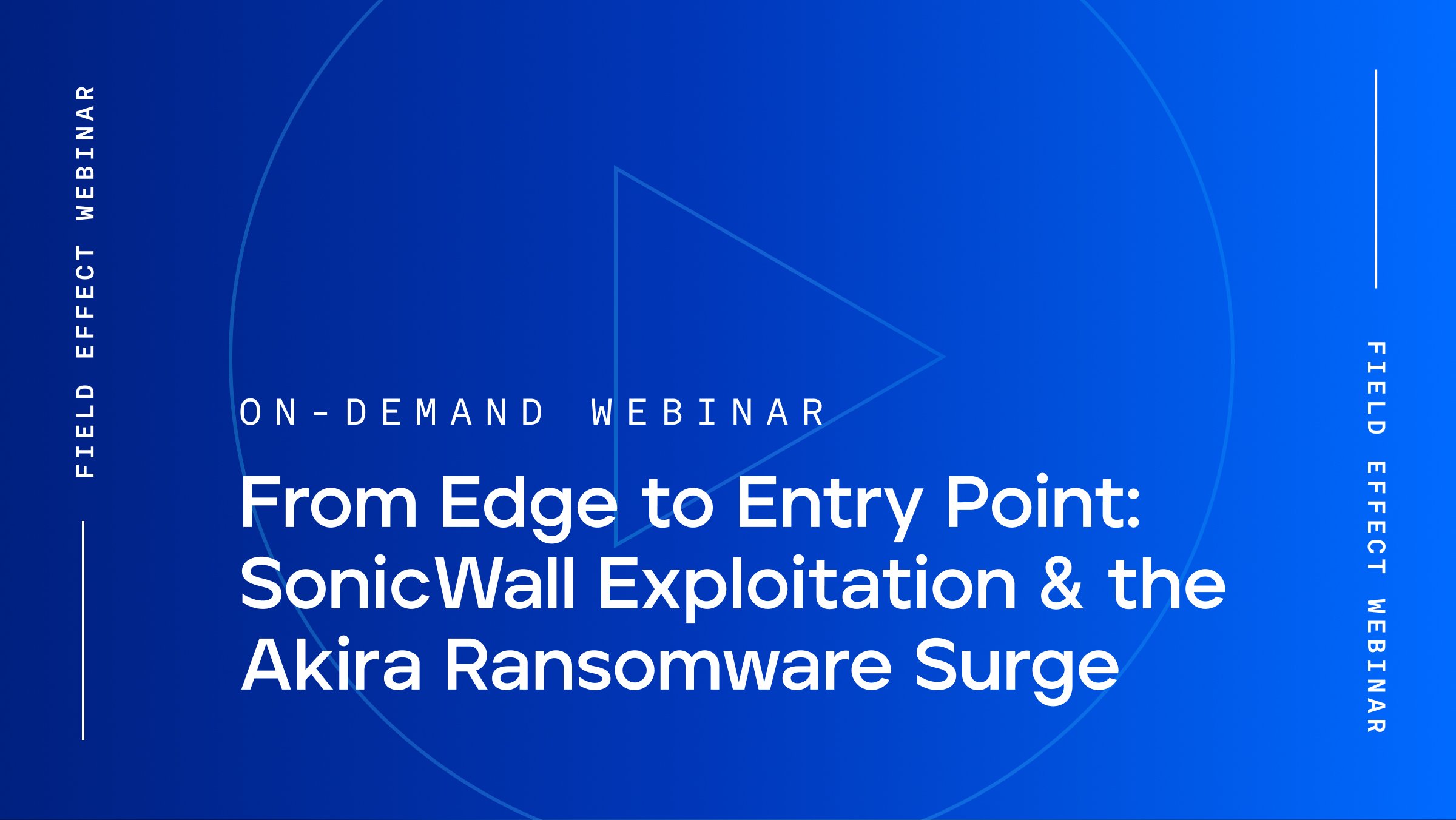
Blog Post
Last updated: January 19, 2024
In the rapidly changing digital landscape, cyber threats evolve faster than you can adapt, making it essential to enact robust cybersecurity measures. Yet cybersecurity is no longer just the tools used—it's the people using and managing them, too.
Today's organizations need a dedicated group of experts armed with advanced tools and technology to be truly secure. This need has led to the rise in security operations centers (SOCs) which are responsible for monitoring, detecting, responding to, and mitigating potential cyber threats.
SOCs play a central role in an organization's cybersecurity infrastructure. As the importance of robust cybersecurity measures continues to grow, this shift in mindset has led to the surging popularity of SOCs, not only among large businesses but also among small and medium-sized ones.
This article explores the depth of a SOC's role, the types of SOCs, the challenges inherent in setting up and managing a SOC, and the benefits of outsourcing your security operations.
A SOC is an organization's cybersecurity nerve center. It is a centralized hub where a dedicated team of security professionals continuously monitors and analyzes an organization's security posture to protect it from cyber threats.
SOCs are a combination of people, processes, and technology working together to identify, investigate, and respond to cybersecurity incidents to enhance a business's overall security. The SOC team ensures a business's information assets are protected from security breaches that could lead to significant losses.
A SOC's roles and responsibilities go far beyond responding to security incidents—although that is critical to the SOC’s job. They involve many functions to create and maintain a secure environment for the organization's information systems and data. These functions form an integral part of a comprehensive, holistic cybersecurity strategy.
However, just as organizations differ in their unique needs and structures, every SOC is distinct in its approach and tasks. Not all SOCs necessarily perform the same functions; organizations can tailor SOC roles to meet their specific needs and capabilities.
Let's dive deeper into some key roles to understand better what a SOC does.
A SOC's primary responsibility is continuously monitoring the organization's IT infrastructure. It involves watching over networks, servers, databases, cloud-based services, and endpoints for signs of suspicious activity or anomalies that could indicate a security threat.
Even the smallest organizations create tons of data that would be impossible to sort manually. Because of this, SOCs use automation and sophisticated tooling to assist in monitoring and threat detection. The aim is to detect potential threats before they can cause significant damage.
Once a potential threat is detected, the SOC team shifts to incident response. This involves determining the root cause of the incident, its severity, containing the threat to prevent it from spreading, eradicating it, and finally recovering any systems or data that may have been affected. The SOC works to minimize the impact of the incident and return to normal operations as quickly as possible.
The SOC also has a proactive role in the organization's security posture, often by developing, implementing, and maintaining the organization's security policies and procedures.
Sometimes, the SOC establishes guidelines for access control and using company networks and devices. The policies are continually reviewed and updated to account for evolving threats and changes in the organization's IT environment.
A SOC can also play a pivotal role in regulatory compliance. Many industries have strict rules governing data handling and protection—such as the Health Insurance Portability and Accountability Act (HIPAA) for the healthcare industry. Failure to comply can result in hefty penalties. A SOC can provide the necessary tools and expertise to help ensure businesses meet these requirements.
In addition, SOCs may prepare and present reports on the organization's security status to management and, in some cases, external stakeholders.
Security is not a one-off task but an ongoing process involving regularly reviewing and updating security measures, conducting audits, and learning from security incidents to improve future responses. It also includes staying up-to-date on the latest threats and security technologies and preparing for evolving cyberattacks. SOCs continuously review internal defense measures to defend against emerging threats effectively.
A significant part of a SOC's role is fostering a security culture within the organization. The SOC achieves this through regular cybersecurity awareness training for all staff members, which ensures all employees understand their role in keeping the organization's data safe.
At Field Effect, we strive to provide these SOC functions as a part of our overall comprehensive cybersecurity solution. This allows you to focus on your core operations while we handle your defense. With our solutions, you can enjoy a secure environment without the hassle and complexity of managing it yourself.
As cybersecurity needs vary from one organization to another, so do the types of SOCs that cater to these needs. Different kinds of SOCs suit different organizational structures, resources, and risk profiles. Understanding these types can help you decide which best suits your business needs.
Below are the five common types of SOCs.
A dedicated or in-house SOC is owned and operated by the organization, which manages all the staff, hardware, software, and systems. While this model can provide a high level of control and customization, it is typically the most expensive option and requires significant time and resources. Because of this, it's only accessible to the largest of organizations.
A managed SOC, or "SOC-as-a-Service," involves outsourcing the organization's security operations to a third-party provider. This model can provide access to advanced tools and experienced security professionals at a fraction of the cost of building an in-house SOC. It’s an excellent option for small and mid-sized businesses (SMBs) or organizations with limited cybersecurity resources.
Sophisticated managed detection and response (MDR) solutions like Covalence offer the same benefits as a managed SOC and more. By combining a team of cybersecurity experts with powerful technology and automation, MDR users sleep soundly knowing their cybersecurity is in good hands.
A hybrid SOC combines elements of both in-house and managed SOC models. The organization internally handles some security operations in this model while outsourcing others to a third-party provider. This model offers a balance between maintaining control over critical security operations while still benefiting from the expertise and resources of a managed SOC provider.
A virtual SOC is essentially a SOC without a physical location. It employs a distributed team of security professionals who work remotely using cloud-based tools to monitor and protect the organization's IT environment.
A command SOC serves as a central hub overseeing the operations of several SOCs within a large organization or across multiple organizations. This model is commonly used by businesses with many subsidiaries or partners, allowing for coordinated incident response and threat intelligence sharing.
While the appeal of a dedicated, in-house SOC may seem advantageous at first, it is a significant commitment requiring careful evaluation.
Building an in-house SOC may not be ideal for many businesses, especially small and mid-sized ones with limited resources. Let's explore a few key challenges of building and operating an in-house SOC.
The first challenge is the growing shortage of cybersecurity talent. As the demand for cyber protection continues to rise, the cybersecurity talent pool struggles to keep up.
You need to hire a team of cybersecurity professionals for your SOC, but finding experienced security analysts, incident responders, threat intelligence analysts, and forensics experts is challenging. The global cybersecurity workforce gap has grown by 26.2% since 2021, requiring 3.4 million more workers to secure assets effectively, per the (ISC)2 2022 Cybersecurity Workforce Study.
The second challenge is the high cost of building and maintaining an in-house SOC. It's not just about the cost of hiring and retaining skilled cybersecurity professionals; you also need to consider the expense of the infrastructure.
In-house SOC costs include the physical space, servers, networking equipment, security tools, and software licenses necessary to establish a functional SOC. And the cost doesn't stop at the setup. As your business grows, you must also budget for regular updates, maintenance, and expansion.
Efficiency is another challenge of running a SOC. Even the process of evaluating all the different security tools and solutions can be time-consuming. With options like extended detection and response (XDR), endpoint detection and response (EDR), MDR, security information and event management (SIEM), and many more, the choices seem almost endless.
Without the right tools, your in-house SOC can quickly become inundated with alerts and false positives, leading to alert fatigue and potentially missing actual threats. In addition, procuring and deploying appropriate SOC tools and technologies require significant investments of time and money.
Running a SOC is a 24/7 operation. Cyber threats don't operate on a nine-to-five schedule, and neither can your SOC. The logistical challenge of managing shifts, handling personnel issues, and ensuring continuous coverage can be overwhelming. It necessitates a team of analysts working around the clock, which can be demanding and costly for many businesses.
Adhering to regulatory and compliance requirements adds another layer of complexity. Different industries have different compliance requirements, and non-compliance can lead to substantial penalties.
Ensuring your in-house SOC is compliant involves understanding the relevant laws and regulations, integrating them into your operations, and maintaining compliance as those regulations evolve.
The cybersecurity threat landscape is constantly evolving. Cybercriminals always find new ways to exploit systems, including sophisticated malware and ransomware.
Staying ahead of these threats requires continuous learning, threat intelligence, and staying updated on the latest cybersecurity trends and techniques. It can be a significant challenge for an in-house SOC that already has its hands full managing daily operations.
In-house SOCs often struggle to scale and adapt due to the complexity and diversity of threats accompanying business growth. The resources needed to manage a SOC rise exponentially with the expanding IT environment, new regulatory requirements, and diversified threat landscape.
Moreover, larger organizations face longer detection and response times due to increased data volumes and a broader attack surface. As such, you may need to consider outsourced SOC models for better scalability and flexibility.
Given the complexity and cost of running an in-house SOC, outsourcing is an increasingly attractive option for many businesses. Choosing a managed SOC can provide you with the capabilities of a fully staffed SOC without the overhead and operational burden, as well as:
In the face of an ever-evolving threat landscape, robust cybersecurity is no longer a luxury but a necessity for businesses of all sizes. SOCs are pivotal in combating these threats, but establishing an in-house team, modern technology, and processes can be daunting and often out of reach for SMBs and MSPs alike.
Outsourcing your cybersecurity to a managed SOC provider can offer a sophisticated and cost-effective defense, allowing your team to focus on other priorities. Finding a solution with the right balance of human expertise and technology will be critical to your success.
That's where we come in.
As a global leader, we understand the importance of robust cybersecurity and the challenges faced in establishing it. That’s why we layer on a fully managed 24/7 SOC team to our natively built MDR platform to deliver world-class threat detection and protection. Our team continuously evolves the platform to reflect new threats, so you can stay ahead of tomorrow's cybercriminals.
With Field Effect, you'll have a powerful ally in the fight against cyber threats. Contact us today to see how our hands-free, fully managed cybersecurity solution lets you get back to what you do best.


